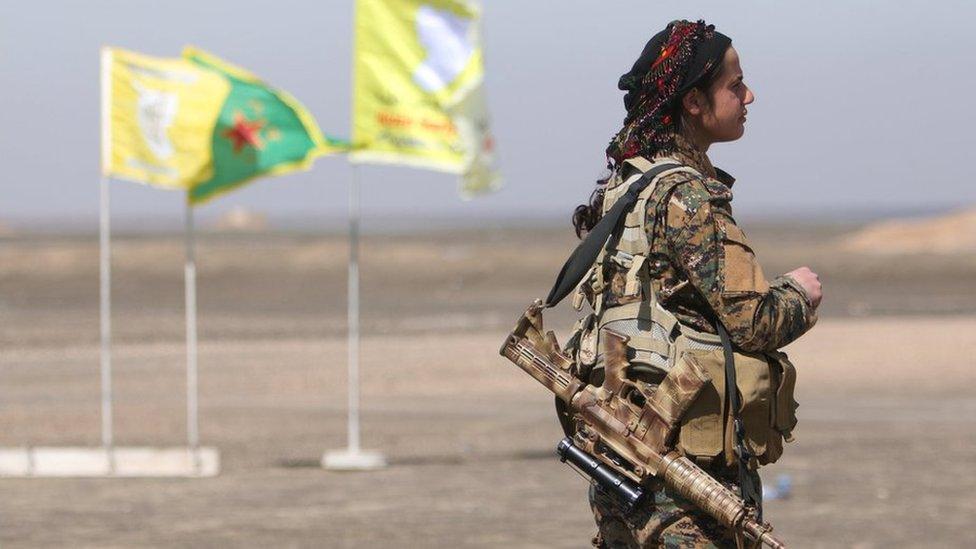
Fate Of Syria's Kurdish Autonomous Region Uncertain After Assad's Fall
The area is considered Syria's“oil and gas reservoir,” making its economic and military future significant for the new Syrian administration. The SDF's future as a military force is also at stake. Turkey claims the SDF is an extension of the Kurdistan Workers' Party (PKK), which it classifies as a“terrorist” organisation. Additionally, the fate of thousands of students and employees subject to the administration's unique laws remains uncertain.
The“Autonomous Administration of North and East Syria” established its own laws and governance after taking control of these areas, which were previously held by ISIS, and expanded its reach between 2014 and 2019. This expansion extended from the northern parts of Hasakah, the cities of Ain al-Arab (Kobani) and Afrin, towards eastern and southern Hasakah, the city centre of Raqqa, and the eastern bank of the Euphrates River in Deir El-Zor, along with its towns.
The SDF-administered areas encompass about half the length of the borders with Turkey and Iraq. The border with Iraq stretches more than 460 kilometres from the town of Ain Diwar in the north of Hasakah governorate to Baghouz near al-Bukamal in the eastern Deir El-Zor countryside. The area separating SDF-controlled territory from Turkey spans more than 420 kilometres, from Ain Diwar to the outskirts of Manbij in the Aleppo countryside, excluding the 130 kilometres controlled by Turkish-backed“Syrian National Army” factions, following Turkey's“Operation Peace Spring” in 2019.
The region is therefore of political and geographical significance, linked to sensitive issues with Syria's neighbours, including the pursuit of ISIS cells by Iraq and Turkey's concerns about the SDF's presence on its southern borders. The presence of over 15 American military bases in the region further complicates the situation. The area also houses the“Al-Hol” and“Roj” camps, which hold more than 10,000 people from ISIS families, as well as numerous prisons and detention centres, including the“Al-Sina” and“Ghuwairan” prisons in Hasakah. There are approximately 13,000 detainees accused of ISIS affiliation, including at least 8,000 foreigners from more than 50 nationalities.
The visits of Turkish intelligence head, Ibrahim Kalin, and his Iraqi counterpart, Hamid Al-Shatri, to Damascus shortly after the new Syrian administration took office, underscore the importance of the SDF file to the national security of all three countries. These visits indicated a desire to address the issues without posing a threat to regional and international security. These developments explain the efforts by the United States and France to reach a consensus that would allow Damascus to impose its authority on the region while respecting Kurdish specificities and preventing ISIS cells from reorganising.
The United States has also engaged in discussions with the new Syrian administration to understand their vision for the country after the ousting of former President Bashar al-Assad, particularly in light of the US's prior experience with the Taliban in Afghanistan. Last week, three senior US diplomats met in Damascus with leaders of Hayat Tahrir Al-Sham (HTS), the group that led the armed opposition factions to topple the Assad regime, a group the United States designates as a“terrorist organisation”. The meeting was aimed at persuading them to adopt a“comprehensive and moderate” form of governance in Syria.
According to a report in The New York Times, US officials believe this is the best option to prevent further violence and chaos in Syria. They believe the new leadership in Syria is so far“saying the right things”. Barbara Leaf, a senior US State Department official for Middle Eastern affairs, said that Ahmed al-Shar'a, the leader of HTS,“appeared pragmatic” when she met him in Damascus. She added that Al-Sharaa, also known as Abu Muhammad Al-Golani, made“moderate statements” on a range of issues, including the rights of women and minorities, and gave assurances that“terrorist groups will not operate inside Syria.”
However, US officials remain cautious about Al-Sharaa. They fear that his statements are only an attempt to“gain international support” as part of his plans to consolidate his power, and potentially impose“strict rule,” similar to the Taliban movement in Afghanistan in 2021, The New York Times reports. US officials remember their attempts in 2021 to broker a power-sharing agreement with the Taliban as US forces prepared to leave Afghanistan. They also believed the Taliban might be willing to make compromises such as allowing girls to attend schools to win international recognition. However, after the departure of the last US troops, Taliban fighters seized power, quickly imposing restrictions on daily life and barring women from most public places. Senior officials in the Biden administration have not forgotten these events.

Legal Disclaimer:
MENAFN provides the
information “as is” without warranty of any kind. We do not accept
any responsibility or liability for the accuracy, content, images,
videos, licenses, completeness, legality, or reliability of the information
contained in this article. If you have any complaints or copyright
issues related to this article, kindly contact the provider above.
Most popular stories
Market Reseach
- B2PRIME Strengthens Institutional Team's Growth With Appointment Of Lee Shmuel Goldfarb, Formerly Of Edgewater Markets
- BTCC Exchange Scores Big In TOKEN2049 With Interactive Basketball Booth And Viral Mascot Nakamon
- Ares Joins The Borderless.Xyz Network, Expanding Stablecoin Coverage Across South And Central America
- Primexbt Launches Stock Trading On Metatrader 5
- Solana's First Meta DEX Aggregator Titan Soft-Launches Platform
- Moonacy Protocol Will Sponsor And Participate In Blockchain Life 2025 In Dubai
- Primexbt Launches Instant Crypto-To-USD Exchange



















Comments
No comment